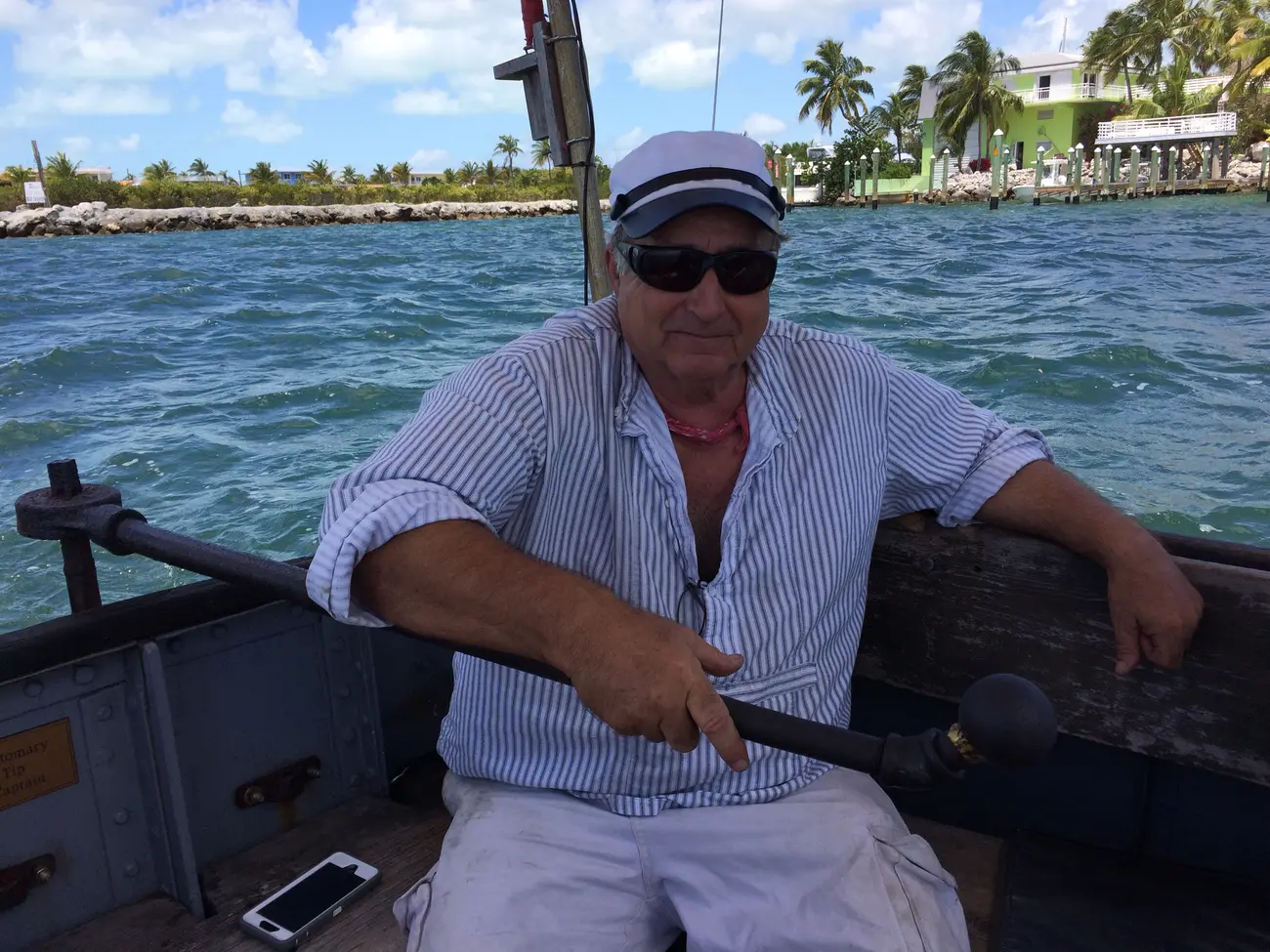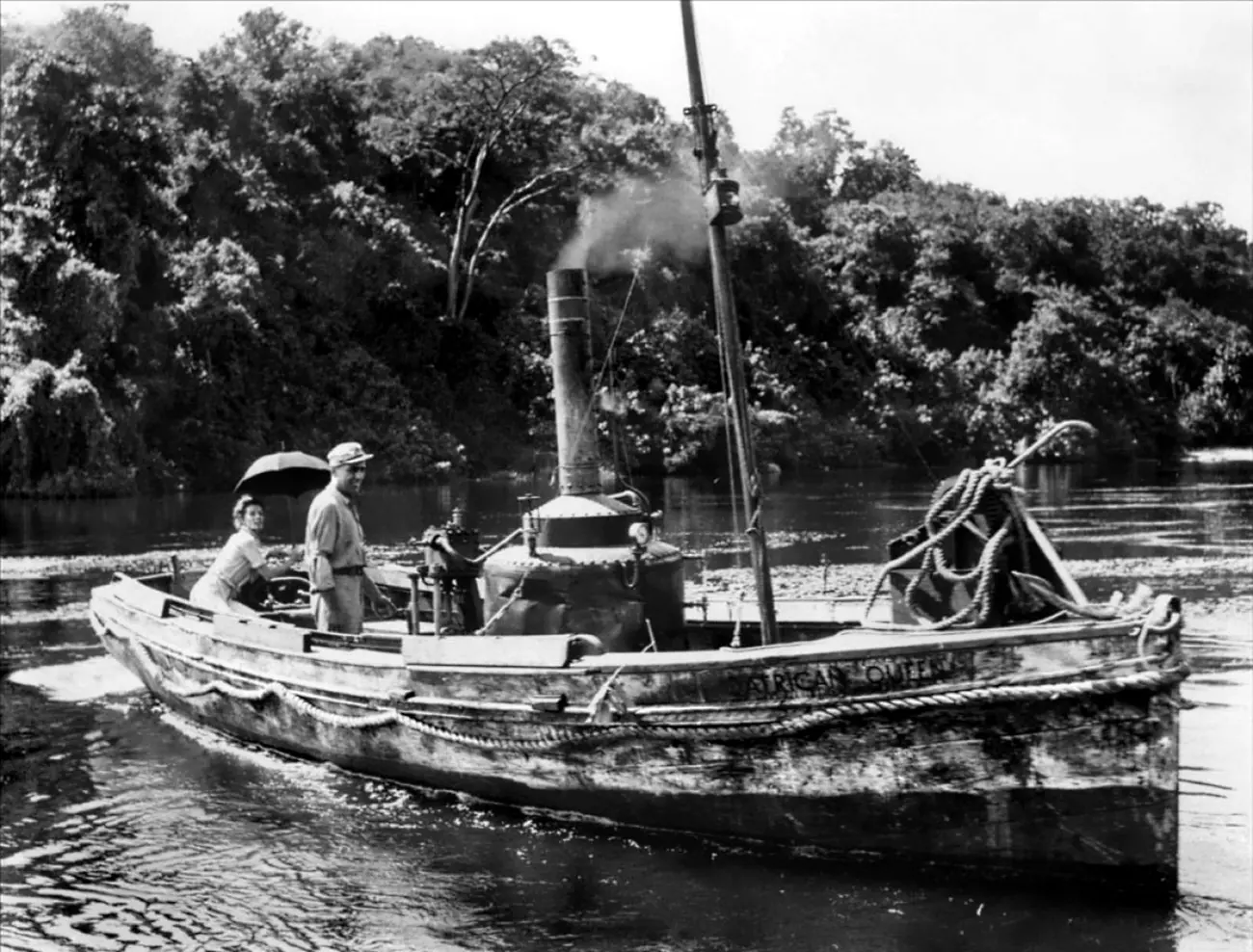In the classic 1951 film “The African Queen,” a small steam boat with the same name is damaged on river rapids, shot at, and ultimately destroyed while being used as a makeshift torpedo against a German vessel at the beginning of World War I.
Models and prop boats were used during filming to portray the damage, and the real African Queen survived.
Today, the actual boat used in the film leaves a dock in Key Largo every two hours, taking history enthusiasts, movie lovers, and other sightseers on a trip down a canal, into the ocean and back.
“People just love this boat, especially if they’ve seen the movie,” says Michael Hewitt, who pilots the African Queen for no more than six passengers per cruise. “If they haven’t seen the movie, one thing’s for sure: when they take a ride on the boat they will see the movie later. People come from all over the country to ride on this boat.”
The boat renamed the African Queen for the film was built in 1912 by the Abdela & Mitchell Shipyards in Brimscombe, Gloucestershire. It was shipped from Britain to the Belgian Congo for use on the Ruki River and Lake Albert. The boat was originally named the Livingstone.
“It was a work boat,” says Hewitt. “It helped the British East Africa Railway build trestles across the waters and hauled freight, personnel, whatever was necessary. It was a real hard work boat.”
While scouting locations in Africa for the filming of “The African Queen,” director John Huston and producer Sam Spiegel saw the work boat Livingstone, and decided it would be perfect for use in their movie.
Based on the 1935 novel by C.S. Forester, the film “The African Queen” stars Humphrey Bogart in his only Oscar-winning role as the rough boat captain Charlie Allnut. Katharine Hepburn was nominated for her role as the proper Methodist missionary Rose Sayer.
“The African Queen” is an adventure film. At the outbreak of World War I in 1914, Germans raid the mission village where Rose is working. Charlie helps her to escape on the African Queen, but they must evade German soldiers. Rose wants to use the boat as a torpedo to sink a German ship that is preventing British counterattacks in the area.
Charlie reluctantly agrees to Rose’s plan, and the two very different people become a couple while facing adversity together.
On the way to fight the Germans, the African Queen is damaged while going over three rapids, is shot at by German soldiers, and Charlie is covered with leeches while trying to repair the boat.
The couple is captured before detonating their makeshift torpedo, but the German ship captain grants their last wish to be married before being executed. At the last minute, the unmanned African Queen completes her mission, allowing Charlie and Rose to swim to safety.
Following the release of “The African Queen” in 1951, the boat retained its new name. It returned to service as a work boat in Uganda, East Africa in the 1950s and ‘60s, until it was brought to America and purchased by Hal and Joyce Bailey.
The Baileys offered seasonal river cruises aboard the African Queen in Oregon. In 1971, reporter Charles Kuralt did a segment on the boat for the CBS Evening News.
Key Largo hotelier Jim Hendricks purchased the African Queen from Hal Bailey in 1982. Hendricks provided tours on the boat from the dock outside his Holiday Inn until the engine broke in 2001. He died in 2002 before the antique engine could be repaired.
Hendricks’s son leased the boat to Lance Holmquist, owner of Calypso Water Sports and Charters. Holmquist was able to replace the engine of the African Queen by 2012, in time for the boat’s 100th birthday.
Holmquist says that maintaining the African Queen and keeping it operational is a labor of love.
“For example, this is an 1896 Sisson engine, so it’s hard to get parts. We have to make them, get real creative.”
The modern tour aboard the African Queen in Key Largo is much more sedate than the exciting adventure depicted in the film, although the scene where Rose pours Charlie’s gin overboard is recreated by enthusiastic tourist volunteers.
Dr. Ben Brotemarkle is executive director of the Florida Historical Society and host of the radio program “Florida Frontiers,” broadcast locally on 90.7 WMFE Thursday evenings at 6:30 and Sunday afternoons at 4:00, and on 89.5 WFIT Sunday mornings at 7:00. The show can be heard online at myfloridahistory.org.


